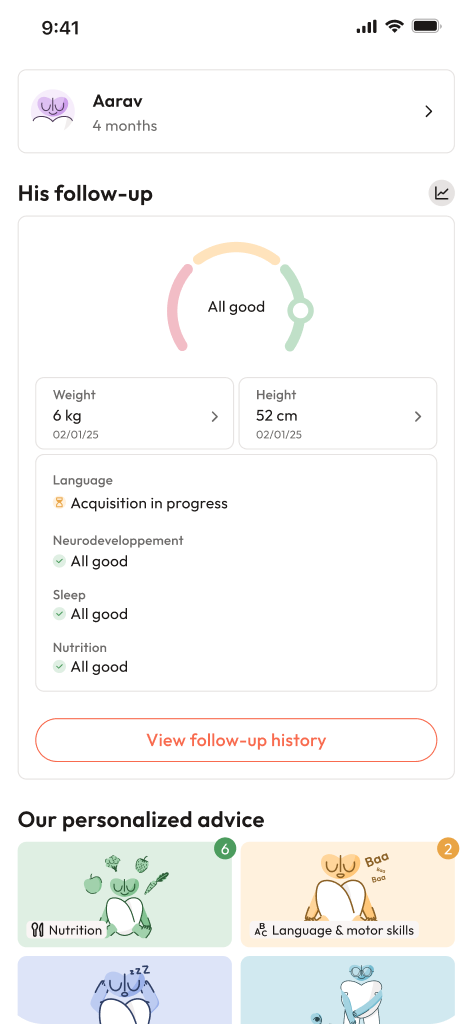Anticipation, hope, and sometimes a flutter of concern—these feelings swirl together for many parents as pregnancy advances. The gestational age chart sits quietly in the background, yet its role is anything but minor; it’s the silent stage manager ensuring every scene plays out on schedule. It translates confusing weeks and months into a language both doctors and families can share, turns ambiguous measurements into clear signposts, and helps you make sense of when to book check-ups, prepare paperwork, or watch for signs that need attention. Brimming with clinical intricacies but grounded in family reality, this chart can feel like both a guidebook and a diary—if you know how to read it. Wondering how to make sense of each data point, percentile, or abrupt curve? Curious if the numbers spell reassurance or require immediate focus? Let’s map the journey together, unpacking what the gestational age chart truly reveals, how to use it wisely, and what rhythms to expect as each week unfolds.
Gestational Age Chart: Decoding the Basics, Addressing Parental Uncertainties
Defining Weeks, Months, and Medical Terms
Is the baby “twelve weeks” or “three months”? The counting can twist one’s mind into knots. Most clinics start from the first day of the last menstrual period (commonly known as LMP). Some may reference “weeks of amenorrhea”—a formal term denoting how long it’s been since menstruation stopped. Another system starts at conception, which is typically about two weeks after LMP. Confusing? A glance at the gestational age chart clears the haze: it sticks to weeks, not calendar months, ensuring everyone—doctors, parents, and extended family—speaks the same time language. This precision matters for every appointment and scan, as even small miscalculations can shift screening windows or delivery plans. If your practitioner mentions both “weeks from LMP” and “weeks from conception”, the conversion is straightforward: LMP-based dating carries you about two weeks further along.
What the Gestational Age Chart Actually Shows
Open a gestational age chart and you’ll notice a scatter of numbers, percentiles, and abbreviations. Each plot tells a story:
- Percentiles illuminate where your baby’s measurements fall in comparison to many others at the same gestational week. The 50th percentile means “average”, while the 10th or 90th points nudge towards notably smaller or larger.
- Z-scores give another layer—standard deviations away from the mean. For many, these numbers evoke school reports, but here, they simply highlight outliers needing further observation.
- Growth velocity stands as perhaps the most telling section. Is the curve steady? Or does it suddenly dip below that golden line? A single low reading can happen for many reasons, but a trend down over time wakes clinicians up.
Measurements that populate the chart:
- CRL (Crown–Rump Length): The earliest and most accurate measure during the first trimester (6–13 weeks). Accuracy is within 3–5 days, almost like a perfectly set clock.
- BPD (Biparietal Diameter) and HC (Head Circumference): Used from the second trimester; they sketch out the baby’s head size.
- AC (Abdominal Circumference): Reflects nutrition and forms the foundation for estimating weight.
- FL (Femur Length): Adds clues not just about growth but also about body proportions.
- EFW (Estimated Fetal Weight): Calculated using combinations of the above, interpreted with a Hadlock formula or similar, and always given as an educated estimate, not a promise.
Everyday Uses That Actually Impact Families
Not just a doctor’s chart—the gestational age chart is your rendezvous planner:
- Date the pregnancy, confirm EDD (expected due date), and plan each step: from NT scan and anomaly checks to glucose screening and, finally, delivery.
- Growth trends drive decisions: increased surveillance, specialist referrals, or even the timing of birth.
When are the stakes highest? Whenever calculated weeks disagree with scan findings, percentiles drop below the 10th, or maternal situations—think diabetes or high BP—color the picture.
Determining Gestational Age: Which Clock to Trust?
LMP, Naegele’s Rule and When the Calendar Fails
Calculation often starts simple: subtract three months, add seven days to the LMP, toss in a full year (Naegele’s Rule), and voilà, your EDD. But what if periods are irregular, memories hazy, or hormonal contraception clouds timing? Here, the gestational age chart bows to ultrasound, which emerges as the more reliable anchor.
Ultrasound Dating: CRL Steps in as Gold Standard
Picture the scene: a first-trimester scan, the embryo visualised, the crown–rump length measured precisely. If this CRL date veers off by more than a week from your LMP, the chart listens to the scan. Early ultrasounds spot the gestational sac (seen by week 4–5), and with each passing day, detail sharpen—yolk sac, then embryo. What happens if the measurements disagree, or the sac looks smaller or emptier than expected? That’s when your provider pinpoints the most reliable reference, updates the chart, and sometimes calls for a second scan to watch the story unfold.
Second and Third Trimester: Growing Uncertainty
Once past 14 weeks, biometry becomes a rougher guide—errors grow from a handful of days to two or three weeks. So, late scans are all about checking on growth, not rewriting the pregnancy’s timeline. And for IVF or FET pregnancies, the date of transfer provides precision—ultrasound confirms that growth matches what science expects.
Choosing the Right Chart: Local, International, or Custom?
INTERGROWTH, WHO, and Population-Specific Charts
Clinics may pick multinational references like INTERGROWTH-21st or WHO for their standardized approach. Others lean toward population-specific standards, better attuned to local growth patterns. Through a parent lens, what matters is that the same chart and reference are used consistently for your pregnancy—avoid flipping between different systems, as even minor formula shifts can nudge percentiles up or down.
The Question of EFW Formulas and Customisation
Many use the Hadlock formula, which blends head, abdomen, and femur data to churn out EFW. Some clinics, however, introduce custom “Gardosi-style” charts, which weave in maternal factors (height, weight, parity, fetal sex) and boast a nuanced touch. These are powerful, but only if fed accurate inputs.
Digital Tools and the Everyday Clinic
Modern clinics often tuck calculators directly inside electronic records; outlier results get an automatic flag, prompting a quick double-take by staff.
Reading a Gestational Age Chart: Step-by-Step
Step 1: Anchor the Timeline
First trimester CRL—if you have it—rules. LMP is the fallback, but not without noting if periods are reliable. Every number added is tagged with its source, keeping the gestational age chart trustworthy.
Step 2: Plot Those Measurements and Consistency Counts
Each scan plots values—head, abdomen, femur—and calculates EFW. Notation is key: “28+0 weeks — HC 230 mm; AC 210 mm; FL 50 mm; EFW ~1100 g (Hadlock) — 40th percentile.” Consistency in formulas matters most for detecting trends.
Step 3: Discern Percentiles and Z-Scores, Look for Patterns
SGA (small for gestational age) is below the 10th percentile, LGA above the 90th. Sometimes, head and femur look average, but abdomen lags—this points towards asymmetric restriction. If all parameters run small, think of early-onset, possibly a different mechanism.
Step 4: Serial Plotting—A Snapshot Isn’t a Movie
Single reading? That’s just a point; serial values sketch the narrative. A sustained slide down percentile lines signals something is changing and deserves attention.
Step 5: Doppler and Amniotic Fluid—The Broader Picture
Beyond simple measures, clinicians bring in umbilical and cerebral artery Dopplers, fluid index (AFI/MVP). When measurements and Dopplers all look healthy, routine care is enough; if not, the chart starts signaling closer follow-up.
Major Milestones and Typical Scans on the Gestational Age Chart
First Trimester: Early Landmarks
- Dating scan (CRL): as early as 6 weeks, up to 13.
- Nuchal translucency: between 11+0 and 13+6 weeks.
Official paperwork and plans often align just after that major first scan.
Mid-Pregnancy: Anatomy and Structure
- Anomaly scan (typically 18–22 weeks): Structure, placental position, and an initial gestational age chart growth baseline.
Late Pregnancy: Growth and Surveillance
- Growth assessment: usually at 28–32 weeks, then as often as biweekly if the EFW dips below the 10th percentile or as other risks appear.
- For larger babies, or pregnancies complicated by diabetes, intervals may be 3–4 weeks.
Triggers for more frequent checks? Abnormal percentiles, a faltering growth curve, or new concerns in maternal health.
When Numbers Raise an Eyebrow: Understanding Abnormal Patterns
Decoding Small for Gestational Age vs Fetal Growth Restriction
SGA signals a small but often healthy baby. When this is combined with a slowing curve and abnormal Dopplers—fetal growth restriction (FGR) comes into play. Not every small baby requires intervention; it’s the trend and the context that do.
Large for Gestational Age and Macrosomia
LGA raises eyebrows around delivery—there are risks of shoulder dystocia (difficult passage at birth) and low baby blood sugars. Suspected macrosomia (often pegged at a birthweight over 4,000g) spurs discussions around delivery mode but isn’t a ticket for induced labour unless medical circumstances demand.
Declining Centiles and Discordant Growth in Multiples
The chart particularly matters when the growth curve drops week after week, or in twin pregnancies where a difference of more than 20% between babies’ estimated weights pushes for early, frequent checks—sometimes even a specialist consult.
Actionable Pathways: From Monitoring to Decision-Making
Managing FGR
Regular growth scans—every 1 to 3 weeks, depending on severity—and repeated Doppler checks, occasionally supported by maternal bloodwork. Delivery gets discussed once abnormal Dopplers persist or other warning signs accumulate.
Surveilling LGA and Planning Macrosomia Deliveries
Focus on blood sugar management and thoughtful delivery planning. Induction for large babies must be weighed carefully, not automatically enforced.
Specialist Referrals
Escalation comes for persistent FGR, extreme deviations (<3rd or >97th percentile), Doppler anomalies, and pronounced differences in twins. At such junctions, maternal-fetal medicine steps in for guidance.
EFW Calculation and Limits
The Hadlock formula and its cousins take biometric data—usually HC, AC, FL—and predict EFW, always with an error margin of about 10–15%. The gestational age chart helps visualize how these numbers fit within typical ranges for each week, but the main focus is serial consistency rather than one-off accuracy.
Add-Ons: Doppler, Amniotic Fluid, and Comprehensive Assessment
- Umbilical artery Doppler: Spotting resistance in placental blood flow, with absent or reversed end-diastolic flow spurring rapid response.
- Middle cerebral artery (MCA) Doppler: Lower PI suggests compensatory blood flow to the brain.
- Amniotic fluid analysis: AFI (amniotic fluid index) or MVP (maximal vertical pocket) provide clues about the baby’s well-being, with very low or high values pushing teams towards delivery or targeted interventions.
Viability, Health, and Real Life: What the Chart Tells, and What It Can’t
- Viability—generally recognized from 23–24 weeks in high-resource settings—depends not just on the baby’s week, but also on local intensive care capacities.
- The gestational age chart frames conversations with neonatologists and helps set realistic expectations, particularly around borderline survival points.
At home, many parents hang a simple week-by-week chart on the fridge or phone. Whether it’s for mapping baby’s movements, tracking symptoms, or prepping questions for clinic, it builds a bridge between the data and daily experience—acknowledging that baby, body, and chart all have their own distinct rhythms.
Week-By-Week Snapshots: Bringing the Chart to Life
First trimester (weeks 1 to 13):
- Weeks 1–2: Preparation, ovulation, conception—no sensations just yet.
- Week 3: Implantation stirs within; perhaps a hint of fatigue.
- Weeks 4–7: Organs begin to form, heartbeat starts, morning sickness peaks.
- Weeks 8–10: Limbs grow; tiny length increments; the ever-present fatigue may linger.
- Weeks 11–13: Embryo turns into fetus, queasiness may recede, and a gentle bump emerges.
Second trimester (weeks 14 to 27):
- Weeks 14–16: Baby’s face glares clear on scans; energy often rebounds.
- Weeks 17–19: First flutters felt; the bump stands out.
- Week 20: 19 cm and 300 g is average; anatomy check is routine.
- Weeks 21–24: Senses mature, growth speeds up, stretch marks may attend.
- Weeks 25–27: Surges in lung growth and baby’s reserves.
Third trimester (weeks 28 to 40):
- Weeks 28–31: Response to music, voices, maybe a kick or two; breathlessness increases.
- Weeks 32–34: Rapid weight gain, stretching sensations, space gets tight.
- Weeks 35–37: Lungs finishing; head down, Braxton-Hicks kick in.
- Weeks 38–40: Full term—average size hovers around 3–4 kg, final weeks before the big day.
Practical Planning with the Gestational Age Chart
From official paperwork around your first scan to planning for leave and childbirth classes, the timeline provided by the gestational age chart ensures less rush, fewer missed deadlines, and as much calm as possible.
Picking the Right Chart, The Right Way
Population-based charts like INTERGROWTH or WHO fit when wide comparability matters. Customised, locally-validated charts can fine-tune detection for your region or group. No matter which chart is used, the secret lies in consistently applying the same reference for your pregnancy.
Clinics now often store the dating source, automate calculations, flag trends, and suggest follow-ups—all in a bid to keep care personalised yet predictable.
Close communication is essential: clear language, trend lines, and explanation of next steps ensure families can focus on the bigger picture, not on isolated, potentially worrying numbers.
Things That Can Lead Astray: Measurement and Interpretation Pitfalls
Operator skill, baby’s position, and machine quality influence every measurement. First-trimester CRL offers the steadiest base; past that, measurements gain variability. Charts sometimes borrow from one population to use in another—misclassifications can occur, highlighting the value of regionally-adapted data. Single-point focus? Not enough. The chart’s deeper meaning only emerges through repeated, longitudinal assessment.
Clinical Pearls for Everyday Reference
Rely on the gestational age chart when the first-trimester scan and LMP match and growth is steady; concern emerges with sharp faltering in trends or worrisome Doppler readings. Immediate specialist involvement is signaled by AEDF/REDF, substantial percentile drops, or big differences between twins.
Key Takeaways
- The gestational age chart transforms ambiguous weeks into clear benchmarks for tracking fetal growth, scheduling procedures, and planning deliveries.
- Crown–rump length in early scans stands tall for truly accurate dating; past 14 weeks, the focus shifts to trend detection and monitoring.
- Consistency—between dating anchors, reference charts, and formulas—matters more than hunting for a single “correct” value.
- Abnormal findings push the care pathway into action: expect more scans, Doppler tests, or a visit with specialists in maternal–fetal medicine.
- Charts should guide and reassure; they offer structure, but flexibility and clinical context always take center stage. For customized guidance and free child health tools, download Heloa, your ally in smart parenting.
Questions Parents Ask
How do I use a gestational age chart calculator and what details should I enter?
Most calculators work with your LMP or with an early scan measurement (like CRL – crown–rump length). For later stages, biometric measurements such as BPD (biparietal diameter), HC (head circumference), AC (abdominal circumference), and FL (femur length) are commonly needed, estimating everything from estimated due date to EFW and percentiles. Enter the anchor that’s most reliable, pick the reference chart if there’s an option (Hadlock, INTERGROWTH, WHO), and remember: the numbers guide planning but are not final verdicts. If you see a value that confuses, ask the clinic about which chart and formula were used.
Can femur length alone predict gestational age or tell me about my baby’s health?
Femur length (FL) offers clues but is not a solo act. In the early second trimester, it correlates well with gestational age, yet differences rise later on. FL works best alongside measures like HC and AC—together, they check if growth is balanced. If FL appears unusually short or long, often it just means a repeat or closer monitoring, rather than a rush to conclusions.
How reliable are fetal weight charts for predicting actual birth weight?
Charts giving EFW in grams or kilograms are “well-educated guesses”, typically varying by 10–15%. These are great for tracking trends—if your baby’s percentile remains steady, the outlook is calm. If numbers dip, expect your clinic to recommend further tracking. For practical planning—healthcare or parental leave—focus on statistical ranges rather than pinning hopes on a precise gram value.
What if my baby’s measurements fall outside the normal percentiles?
One outlier can occur for many reasons—technique, baby’s position, or natural family variability may be in play. Persistent trends, especially drops in percentile week by week, drive further action. Your care team will look at patterns, Doppler readings, and overall health, often bringing in specialists when the situation asks for extra attention.
Why does gestational age matter in high-risk pregnancies like twins or when maternal conditions exist?
The gestational age chart becomes even more valuable in such scenarios. Special growth charts for twins account for expected differences, and close percentile tracking helps anticipate when action might be needed for maternal diabetes, high BP, or other health considerations.
Remember, every number on the gestational age chart is a chapter in your baby’s story—use them to have informed conversations and never hesitate to reach out for clarification or reassurance when something feels unclear.
Further reading:
- Small-for-Gestational-Age (SGA) Infant – Pediatrics: https://www.msdmanuals.com/professional/pediatrics/perinatal-problems/small-for-gestational-age-sga-infant
- Appropriate for gestational age (AGA) – MedlinePlus: https://medlineplus.gov/ency/article/002225.htm#:~:text=Gestational%20age%20is%20the%20common,determined%20before%20or%20after%20birth.









